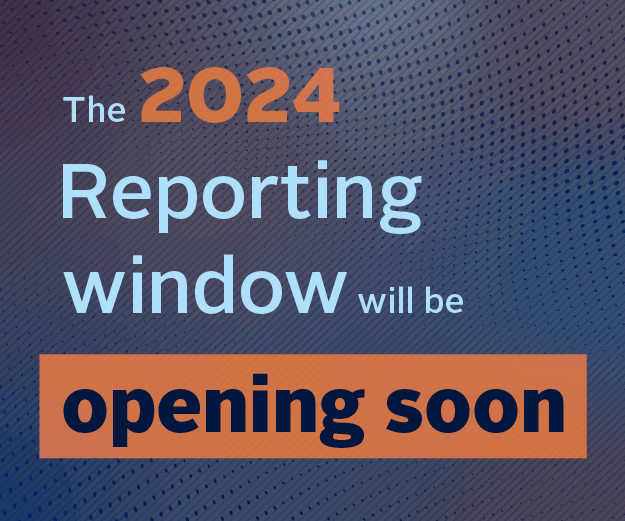Four ways for investors to respond to economic inequality
1. Inequality as a lens for investment analysis
Social issues related to inequality may already be integrated into responsible investment analysis and risk management tools used to inform investment decisions and determine shareholder engagement. Related issues include: excessive or poorly aligned executive compensation within firms; efforts to improve corporate reporting on disparities between executive and worker pay; workforce relations and management practices (using indicators such as stable fulltime employment, health and safety performance, corporate strategy that views labor as a source of value creation rather than simply a cost center and worker engagement as proxies for quality of management and potential predictors of future performance). In these cases, inequality becomes a central organizing theme linking diverse aspects of investor analysis and engagement.
Investors may look at low wage scales, unsafe working conditions, labor standards violations and the like as sources of reputational and political risk in light of increasing concern over inequality. Investor engagement in particular industries on executive compensation and fair wage practices, for instance, in the fast-food industry in the United States, have made explicit links between changing consumer sentiment on inequality and potential reputational risk
Global efforts around supply chain management – such as in the garment industry supply chain work after Rana Plaza – provide similar examples. Political and regulatory risk enter this sort of analysis as public policy changes to address the issues of wages and labor standards.
In-country inequality may be used as an indicator for political risk, for example when analyzing sovereign bonds. Inequality may be a risk factor for creditworthiness given its potential impact on economic growth, or a sign of related risk factors including the correlations between corruption and sovereign defaults – part of a general concern voiced in the PRI’s Fixed Income Investor Guide, which states that “social factors tend to be given greater weight than environmental factors because of links between political stability, governance, and a country’s ability to raise taxes or make reforms.”
2. Efforts to mitigate inequality
In many countries, there is a tradition of economically targeted investment where investors seek products that target specific underserved geographies or marginalized communities who may lack access to resources. In the United States, Michael Porter’s work on the “competitive inner city” was influential in helping develop a practice of investing in poorer neighborhoods in urban areas to promote economic development.18 Housing is a focus of, for instance, the Dutch pension fund manager PGGM, which has invested in workforce multi-family housing in the United Kingdom on the theory that this can help mitigate the inequality-exacerbating rise in housing prices and support urban regeneration in strategic areas.
Globally, the rise of microfinance as an asset class has been specifically linked to the idea of “financial inclusion,” increasing access to needed financial services and opportunities for economic development for poor communities in both developing and developed markets – though research has not always demonstrated the inequality mitigating effects of microfinance. More generally, Bottom of the Pyramid strategies, that focus on the delivery of goods and services to the poor, have been put forward as a means to mitigate poverty and so reduce inequality.
Institutional investors, frequently labor-affiliated, have introduced responsible contractor policies particularly to engage private equity, real estate, and infrastructure funds on labor practices, and in the process have helped give rise to investment vehicles that explicitly call for fair labor standards, access to collective bargaining and quality job creation. These may be seen as addressing the “hollowing out of the middle class” associated with growth in incountry inequality. The French pension fund ERAFP, for instance, has an explicit commitment to favor issuers with strong labor standards and a commitment to democratic labor relations. These types of investment practices can be expected to gain support as the literature shows that increased union density plays a positive role in mitigating inequality.
The field of practice for mitigating inequality may grow, as the international community focuses on the Sustainable Development Goals and national government tackle the challenges of inequality. Investment opportunities generated through “blended finance,” attracting subsidy from institutions such as development finance institutions, promotional banks, and from governments, may target explicit social objectives such as inequality mitigation, with opportunities for private capital to participate. The IFC has released an “inclusive growth” bond, parallel to the emerging market of green bonds, as one such instrument. The need for clear markers for the social value of such investment opportunities, and clear ways to distinguish how private capital contributes to achieving them, has a clear parallel in efforts to ensure that climate-friendly investments succeed in mitigating carbon-equivalent emissions or helping adapt to climate change consequences.
3. Financialisation and inequality
The growth of inequality has been linked to “financialization,” understood as the relative rise in the role of finance in economic affairs, the proliferation of financial products and instruments, and the extension of financial practices into new areas. In his recent survey, Inequality: What Everyone Needs to Know, Galbraith notes that “a common pattern in inequality measures around the world is the influence on the overall measure of inequality of increasing (and sometimes decreasing) incomes in the financial sector.”
There are a variety of mechanisms through which financialization might affect inequality. One familiar line of argument to responsible investors is the link between short- termism in the market and inequality. The fees paid for financial services have received considerable attention since the financial crisis, as compensation schemes - which at the higher end of finance have become emblematic of increasing inequality - are linked to short-term risk taking and speculative investing at the expense of long-term productive activity. This charge extends beyond the finance industry itself. The link between executive compensation and share price performance may encourage short-termism and inequality generating compensation schemes by corporate executives. Cash allocation practices, such as share buybacks, may extract value from companies in the short term at the expense of wage increases and other investments that might drive long term value creation.
As highlighted above, inequality has also been linked to economic instability – Galbraith further notes that “the financial sector influences inequalities in a second way, by concentrating the growth of investment, and therefore the associated incomes, in a small quadrant of economic activity at any one time.” Within finance, the growth of speculative bubbles can reward a small group of first movers at the expense of general economic growth that mitigates inequality. In a feedback loop, disparities in income may also drive the increase of consumer debt, feeding instability and further inequality.
There are debates over the optimal level of financial activity. Broadly construed: finance serves vital purposes, but too much finance may promote instability and harmful inequality. The links between financialization and inequality may bring responsible investors to look at their own role in (de)stabilizing the system. These are the sorts of questions being asked by UNEP’s Inquiry into a Sustainable Financial System with particular respect to climate change. The key question of financial stability and the measure of a financial system that benefits “society as a whole” is also raised in PRI’s recent consultation paper on Sustainable Financial Systems, Principle, Impact.
4. Investor role in broader policy discussions
Most of the recent literature on inequality focuses not on investors, but on the potential policy levers in the public sector to mitigate harmful growth in inequality. Government – at the local, national, and international levels – will bear the primary responsibility of responding to inequality. What is the role for investors in these discussions?
One way that investors often enter into these discussions is through their participation in dialogue over multi- sector codes of conduct, or by adopting these sorts of (often international) norms as guideposts for analyzing investment risks and opportunities. Investors have, for instance, played important roles in discussions on corporate disclosure regimes around core ESG topics related to economic inequality, including information on executive and worker compensation, worker and human rights performance, corporate supply chains, and similar issues. Organized efforts to improve corporate disclosure – such as FSB and SASB – can include many of these issues related to economic inequality. The OECD Guidelines on Multinational Enterprises, for instance, include issues like responsible business practices and labor relations as related to risk management, as do the International Labor Organization’s standards around issues like decent work.
The United Nations has increasingly highlighted the role of the private sector generally, and investors in particular, in tackling the world’s challenges, including through the Sustainable Development Goals. Investor concern with inequality may lead to broader and deeper participation in multi-sector efforts to understand, mitigate, and redress potential harm that results from its growth.
There are also specific topics emerging in public discourse in which investors may find a prominent role. One example is the intense focus on tax evasion and avoidance over the past few years, exacerbated both by public sector austerity programs and new availability of information on the scale of the issue. To the extent that tax evasion and avoidance drive inequality and are a sign of rent-seeking and political capture that distinguishes productive from unproductive economic activity, they become important issues for longterm investors concerned with ESG issues.
An obvious analogy here is to carbon pricing – an issue where responsible investors in many cases have moved on from concerns about the negative effects of a policy on particular investments to a broad support for policies that shape markets to address fundamental long-term challenges.
Why and how might investors respond to economic inequality?
- 1
- 2Currently reading
How investors can respond














